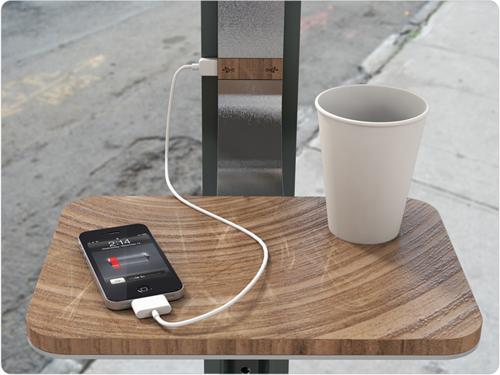AT&T is installing 25 solar-powered gadget charging station in the streets of New York. It’s partly billed as a response to the power outages of the Sandy storm, though at this stage the project is more of a demo than anything else.
The project stems from the work of Pensa, a product design firm that previously produced devices as diverse as an avocado slicer and a digital version of the binoculars used atop tall tourist attractions.
It’s been working on Street Charge, the idea of solar panel chargers in public places. After initial testing with umbrellas, the designers decided the simplest solution was a self-contained pole complete with solar panels at the top and a waist-high table for connecting gadgets for charging without needing to hold on to them. The poles also provide lighting so they can be used at nighttime (though that might be a beacon for crime in rougher neighborhoods.)
AT&T has now paid for 25 of the poles to be installed around the city. They can each charge up to six devices through standard USB ports. There’ll also be three charging plugs (micro-USB, Apple 30 pin and Apple Lightning) for people without cables handy. The pole house a 168-watt-hour rechargeable battery, meaning it can provide power for a long time even during cloudy periods and night time. Pensa says charging time should be roughly the same as with a standard mains power supply, so you should be able to get your gadget up and running without having to wait around for too long.
Much of the media coverage of the project has been based on the fact that many people in the New York/New Jersey area were without power for extended periods last fall and soon came to find they lost communications as mobile device batteries died. However, the Street Charge devices were already in development before the storm hit.
The charging points will only be in place for 90 days as a temporary installation. In the long run Pensa hopes to bring permanent installations to multiple cities, assuming either the city government or a sponsor such as AT&T is willing to pick up the tab.
One possibility is that the poles could be an enhancement to, or replacement for, the poles used for street signs. It’s also been suggested the poles could act as Wi-Fi hotspots.

